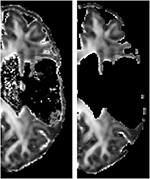Paper Lena Filatova and team published in Frontiers in Neuroscience
Better insight into white matter (WM) alterations after stroke onset could help to understand the underlying recovery mechanisms and improve future interventions. MR diffusion imaging enables to assess such changes.
The goal was to investigate the relation of WM diffusion characteristics derived from diffusion models of increasing complexity with the motor function of the upper limb. Moreover, the researchers aimed to evaluate the variation of such characteristics across different WM structures of chronic stroke patients in comparison to healthy subjects.
The paper can be read here.

Comparison of Multi-Tensor Diffusion Models' Performance for White Matter Integrity Estimation in Chronic Stroke
Olena G. Filatova1,2, Lucas J. van Vliet2, Alfred C. Schouten1,3, Gert Kwakkel4, Frans C. T. van der Helm1 and Frans M. Vos2,5* on behalf of the 4D EEG Consortium
1Department of Biomechanical Engineering, Delft University of Technology, Delft, Netherlands
2Quantitative Imaging Group, Department of Imaging Physics, Delft University of Technology, Delft, Netherlands
3Laboratory for Biomechanical Engineering, Institute for Biomedical Technology and Technical Medicine, University of Twente, Enschede, Netherlands
4Department of Rehabilitation Medicine, MOVE Research Institute Amsterdam, Amsterdam Neurosciences, VU University Medical Center, Amsterdam, Netherlands
5Department of Radiology, Academic Medical Center, Amsterdam, Netherlands